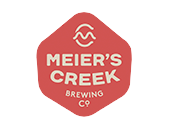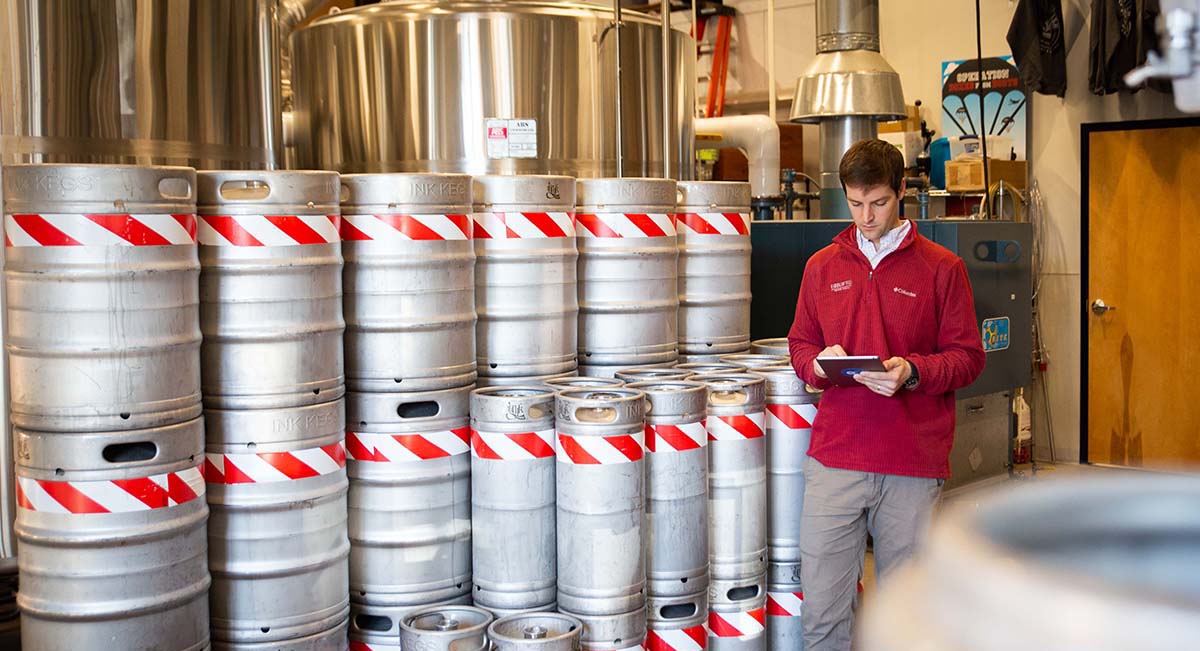Running a brewery these days? You’re up against some serious competition, with over 9,500 breweries fighting for their slice of the market. Sure, nailing those killer recipes is crucial—but let’s get real. The breweries that are crushing it right now? They’re the ones who’ve mastered their brewery planning game. Modern beverage software has transformed how breweries tackle these challenges, streamlining everything from real-time inventory management and scheduling to historical demand analysis, batch size optimization, quality control, and more.
Success requires getting your whole team on board and working from the same playbook. Spreadsheets and whiteboards might work for your neighborhood nano-brewery, but growing operations need more sophisticated brewery planning approaches to scale efficiently and maintain consistency. Here’s the good news: with the right framework and tools, you can build a strategic planning process that sets you up for success.
The Core Components of Brewery Planning
Successful brewery planning requires mastering five critical operational areas that directly hit your bottom line:
- Tank Management and Capacity Planning: Understanding your maximum theoretical output versus practical brewing capacity helps prevent bottlenecks and optimize fermentation scheduling. This includes factoring in cleaning times, transfer periods, and maintenance windows.
- Raw Material Optimization: Beyond basic inventory tracking, strategic brewery planning requires understanding seasonal ingredient availability, storage constraints, and supplier lead times. For example, hop contracts often need to be secured a year in advance, while specialty malts might require careful storage planning to maintain freshness.
- Style-Based Production Cycles: Different beer styles demand different tank residence times – from quick-turning hefeweizens (2 weeks) to extended-aging imperial stouts (8+ weeks). Your brewery production schedule must account for these variations while maintaining consistent product availability.
- Quality Control Integration: Building QC checkpoints into your production timeline ensures consistency without creating delays. This includes scheduling sensory panels, lab analysis, and documentation requirements for TTB reporting.
- Distribution Coordination: Aligning production schedules with distribution demands requires understanding package type preferences (kegs vs. cans), seasonal fluctuations, and account-specific requirements.
Now, let’s examine how these components work together, starting with the market forces that shape your production decisions.

Step 1: Monitor Market Trends
Let’s be clear: planning your brewery operations requires understanding the broader industry landscape. Recent data shows craft beer volume growing at 5.1% in 2023, but with tightening margins and increasing operational pressures. What does this mean for you? This environment makes efficient brewery planning more critical than ever for maintaining profitability and market position.
Related: FAQs for Brewery Production Planning
Independent brewers currently hold 13.3% of the U.S. beer market share, producing 23.4 million barrels annually. While these numbers demonstrate the industry’s strength, they also highlight intense competition requiring brewers to optimize their operations. Here’s what you need to track:
- Global or market-wide demand for beer, particularly craft segments
- The competitive landscape in your distribution area
- Supply chain health, from raw materials to packaging
- Consumer packaging preferences between draft, bottles, and cans
- Seasonal demand fluctuations
Here’s why this matters: breweries that monitored aluminum can availability during recent shortages could adjust their packaging mix or secure alternative suppliers before facing critical shortages. Similarly, tracking hop harvest reports and contracts helps ensure consistent supply for signature IPAs and seasonal releases.
Step 2: Anticipate Customer and Product Demand
Beyond broad market trends, you’ll need a deep understanding of your specific customer base and product performance. This knowledge drives everything from tank scheduling to raw material ordering. Today’s brewery software makes this analysis more accessible and accurate than ever, enabling data-driven decisions that directly impact your bottom line.
Historical Analysis and Forecasting
- Three-year rolling analysis of individual SKU performance
- Seasonal buying patterns by package type and style
- Special event and promotional impact tracking
- Distribution channel preferences
- Tank capacity utilization rates
Here’s what this data reveals: crucial patterns for production planning. For instance, you might discover your wheat beer sales spike 40% during summer months, while your barrel-aged stout sees 80% of annual sales between October and December. These insights help optimize your tank scheduling and raw material ordering throughout the year.
Product Mix Optimization
Let’s talk efficiency: The key to efficient brewery planning lies in balancing your production mix. Quick-turn products like ales and wheat beers (2-3 weeks grain-to-glass) provide steady cash flow, while longer-term products like lagers and barrel-aged styles (6-12 weeks or more) require careful capacity planning. Understanding your specific product velocity helps determine optimal batch sizes and brewing frequency for each style.
You’ll need to factor these varying production cycles into your tank planning while maintaining consistent product availability. This might mean brewing smaller batches more frequently for fast-moving IPAs, while producing larger batches of slower-moving styles to optimize tank usage. The goal is maintaining fresh product across your portfolio while maximizing equipment utilization.
Step 3: Manage Your Inventory—In Real Time
Here’s a fundamental truth: Much of your production planning revolves around your inventory. From packaging to ingredients, You need to make sure you have what you need to continue your operations without disruptions—but without having so much on hand that you exceed your planned costs or waste expired ingredients.
That’s where conscious inventory management comes in. Whichever tracking method you use, from spreadsheets to brewery inventory management software, it’s critical to keep a real-time understanding of what is on hand and when it’s time for a reorder. The more integrated your inventory management, the easier it will be to stay on track and maximize your efficiencies.
Key Inventory Components to Track
- Raw materials – grains, hops, yeast, adjuncts
- Packaging materials – kegs, cans, bottles, labels
- Work in progress – fermenting batches, conditioning tanks
- Finished goods – packaged product ready for sale
- Cleaning supplies and other consumables
Pro tip: Successful breweries often implement “minimum stock” alerts in their beverage software that automatically flag when ingredients or materials drop below predetermined levels. This proactive approach prevents production delays while maintaining optimal stock levels for cash flow.
Keg Management Optimization
Let’s single out keg tracking for special attention. Each keg represents a significant investment, and loss rates can impact profitability. Modern brewery software enables real-time keg tracking through the entire lifecycle:
- Current location (in-house, with distributor, at accounts)
- Age of beer in each keg
- Maintenance history and cleaning schedules
- Return rates from different accounts
- Loss/damage tracking
Proper keg tracking and inventory management form the foundation of efficient brewery operations. By implementing these systems, whether through beverage distribution software or manual tracking, accurate tracking will minimize losses while maximizing your brewing capacity and cash flow. The key is consistency in tracking and quick response to inventory signals—a proactive approach that keeps your brewery running smoothly.
Step 4: Plan for Ingredient Availability
Here’s the thing: The internal component of inventory management should always be complemented by an understanding of external market forces. What does that mean for you? Keeping track of the availability, costs, and delivery times of the ingredients you need for brewing.
Supply Chain Considerations
- Seasonal availability of specialty ingredients
- Hop contract timing and requirements
- Lead times for international ingredients
- Storage limitations and shelf life
- Alternative supplier identification
Let’s look at a real-world example: Recent supply chain disruptions have taught valuable lessons about ingredient planning. Consider this: weather events threatened hops production in 2023, causing beer shortages for brewers who weren’t prepared. Those with robust brewery planning systems could adjust recipes, secure alternative suppliers, or increase safety stock before shortages became critical.
Success requires building flexibility into your planning while maintaining product consistency. This might mean developing backup recipes using different hop varieties or maintaining relationships with multiple malt suppliers. TTB reporting software can help track these recipe variations while ensuring compliance with regulatory requirements.
Remember that ingredient planning isn’t just about having enough—it’s about having the right ingredients at the right time. A brewery production schedule must account for variables like:
- Hop harvest timing for wet-hopped beers
- Fruit seasonality for specialty releases
- Holiday ingredient requirements
- Special order lead times for unique adjuncts
Building strong relationships with multiple suppliers and maintaining detailed records of ingredient timing and availability helps ensure your brewery production schedule stays on track year-round.
Consider implementing brewery software that can track these variables automatically, alerting you to upcoming needs before they become urgent. This proactive approach to ingredient planning helps maintain both quality and consistency in your brewing operations.
Step 5: Build Your Brewery Production Schedule
Now let’s bring it all together. Variables like ingredient availability and demand forecasting come together in your master production schedule. This critical document serves as your brewery’s operational roadmap, coordinating everything from raw material ordering to packaging and distribution. For most established breweries, this means planning 2-3 months ahead to account for longer-aging products and seasonal releases.
Equipment capacity management forms the cornerstone of effective scheduling. Here’s what you’re working with: Your fermentation vessels have specific turnover rates—typically 2-3 weeks for ales and 4-6 weeks for lagers. Between batches, you need to account for clean-in-place (CIP) procedures and potential maintenance windows. Understanding your bright tank availability is crucial for packaging runs, as poor timing here can create significant bottlenecks.
Production timeline planning requires precise coordination of multiple processes. Each brew day needs detailed scheduling, from mash-in times to transfer completion. Fermentation monitoring checkpoints must be established to catch any issues early. Critical timing windows for processes like dry-hopping or fruit additions need careful planning to maintain consistency. Temperature control requirements vary by style and season, adding another layer of complexity to your schedule.
Staff and resource allocation ties everything together:
- Your brewing team needs adequate coverage for each shift while avoiding overtime
- Cellar operations require experienced staff for critical processes like transfers and filtration
- Quality control panels should be scheduled when fresh palates can evaluate the product
- Packaging lines need proper staffing levels to maintain efficiency
- New recipes or processes may require additional training time
The most effective schedules integrate with brewery management software to automatically adjust for real-time changes and unexpected events. For instance, if a fermentation takes longer than expected or a quality check reveals issues, your schedule should be able to accommodate these changes without disrupting your entire production flow. Many breweries find that implementing beverage software reduces scheduling conflicts by 40% or more while improving batch consistency.
Step 6: Optimize Your Schedule for Different Batch Sizes
Here’s something crucial to understand: Not every beer requires the same batch size, and efficient brewery planning means optimizing your schedule for varying production volumes. Your flagship IPA might warrant maximum-capacity brews every week, while your barrel-aged stout might be better suited to smaller, less frequent batches. Let’s look at the key factors that influence these decisions:
Equipment efficiency considerations form the foundation of batch size decisions. Think about it: Your brewing system likely has specific sweet spots for operation—minimum liquid levels needed for proper heat exchange in your kettle, optimal mash tun loading for consistent extraction, and working capacity ranges for your fermentation vessels. Understanding these parameters helps prevent quality issues while maximizing equipment utilization.
When it comes to economics, raw material purchases often come with bulk pricing thresholds that can significantly impact per-batch costs. Labor costs typically don’t scale linearly with batch size—a 20-barrel batch might require the same staff hours as a 10-barrel batch. Energy usage efficiency often improves with larger batches, but you’ll need to balance this against storage costs and distribution logistics.
Product-specific variables round out your batch size considerations:
- Expected shelf life: Shorter shelf-life products may benefit from smaller, more frequent batches
- Sales velocity by package type: Draft accounts might move product faster than packaged
- Seasonal demand fluctuations: Adjust batch sizes based on historical seasonal patterns
- Special release quantities: Limited releases might warrant smaller batches to maintain exclusivity
Modern brewery software can help track these variables and suggest optimal batch sizes based on historical sales data, current inventory levels, and projected demand. For example, data might show that your wheat beer sells 40% faster in summer months, warranting larger batch sizes during peak season. This dynamic approach helps maintain efficiency while meeting market needs. Breweries implementing data-driven batch size optimization often see significant improvements in tank utilization and overall production efficiency.
Step 7: Ensure Quality Control for Every Batch
Quality control must be integrated into every stage of your brewery production schedule. A single inconsistent batch can damage brand reputation and customer loyalty. Your quality assurance program needs clear checkpoints throughout the production process, from raw material inspection to packaged product evaluation.
Raw material testing forms your first line of defense. Before anything enters production, each ingredient delivery should undergo a thorough inspection–checking malt for proper modification and moisture content, evaluating hop freshness and oil content, and ensuring yeast viability meets specifications. These initial checks prevent quality issues before brewing begins.
Related: Tips for the Optimal Brewery Production Schedule
When it comes to fermentation, regular monitoring is perhaps the most critical quality control period. Regular gravity readings help track fermentation progress, while pH monitoring ensures optimal yeast health. Temperature control must be precise and documented—even small variations can create unwanted flavor compounds or slow fermentation progress.
Packaging presents its own set of quality challenges that require careful monitoring:
- Dissolved oxygen levels must be kept minimal to prevent staling
- Fill levels need consistent monitoring to ensure proper volumes
- Package integrity checks prevent leaks or contamination
- Label accuracy and placement must meet regulatory requirements
- Date coding ensures proper stock rotation
Your sensory evaluation program provides the final quality checkpoint. Establish a regular tasting panel schedule that includes both production staff and trained experts. This panel should evaluate:
- Flavor consistency between batches
- Adherence to style guidelines
- Off-flavor detection and analysis
- Package stability over time
- Comparative analysis against standards
These evaluations should be documented in your brewery software system, allowing you to track trends and identify potential issues before they impact customer satisfaction. Breweries find that implementing comprehensive QC tracking leads to measurable improvements in product consistency and quality control.
Step 8: Review and Optimize Your Schedule Regularly
Production scheduling isn’t a static process—it requires regular review and adjustment to maintain peak efficiency. Monthly review sessions with key team members help identify areas for improvement and ensure your brewery planning stays aligned with business goals.
Let’s look at the data you should analyze. Modern brewery management software can provide detailed metrics on three core areas of your operation:
- Equipment Performance
- Production time vs. planned schedules
- Tank utilization rates
- CIP cycle effectiveness
- Maintenance requirements
- Quality Metrics
- Batch consistency measurements
- Failed quality check analysis
- Product stability data
- Customer feedback trends
- Resource Utilization
- Labor efficiency per batch
- Raw material variance
- Utility consumption
- Packaging waste metrics
Here’s how to put this data to work: Look for patterns and opportunities for improvement. You might notice certain styles consistently taking longer than scheduled, indicating a need to adjust standard production timelines. Or perhaps certain shifts show higher efficiency rates, suggesting best practices that could be implemented across all production periods.
Remember: optimization isn’t just about efficiency—it’s about building a more sustainable and profitable operation. Regular schedule reviews using brewery software can help streamline your processes while reducing production costs and improving product consistency. The key is maintaining a systematic approach to implementing changes rather than making reactive adjustments.
How Brewery Production Planning Software Can Help You Optimize For Success
Put it all together, and you get a strategic brewery production planning process that helps you run a more successful, efficient business. At the same time, the number of complexities involved can make implementing that plan difficult without the right software in place.
That’s where brewery production software comes in. The right platform can help with all of the above steps, from real-time inventory management to quality assurance and a production planner that keeps an overview of your schedule. This allows you to focus on the strategic components of running a brewery while streamlining all of your processes.As the market-leading brewery management software, Ekos is ready to help your brewery succeed. Contact us to learn more about the brewery production planning process and how a comprehensive brewery production planning tool can help your business succeed.





